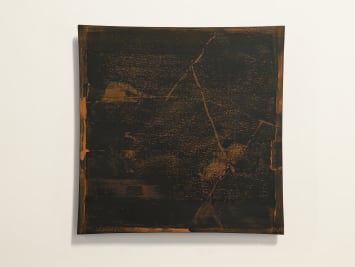After a long and arduous battle with the Covid-19 pandemic, the Greater Chinese art world welcomes the return of Art Basel Hong Kong 2021 this mid-summer, as the first physical edition of this premier Asian art event in two years.
Looking forward to a prosperous year ahead, Tina Keng Gallery presents a dual exhibition, showcasing two artists — Su Xiaobai (b. 1949) and Su Meng-Hung (b. 1976) — both active on the international and Greater Chinese art scenes. The show features artworks created during the pandemic, and aims to provide a different perspective on current issues inspired by an Asian aesthetics and an Eastern philosophy on life. Liberating and at ease — it manifests a dialogue between contemporary art and the classical Chinese consciousness in a post-pandemic reality.
In Su Xiaobai’s hand, lacquer — a thousand-year-old plant material and a symbol of Eastern culture — embodies the concept of existence, posing a philosophical discourse on our daily life through the artist’s poetic transformation. The artist paints layers of vibrantly colored lacquer in a structural and balanced composition, rendering a three-dimensional momentum. The seemingly arbitrary, yet meticulously deliberate handling of visual forms reveals the artist’s pursuit of aesthetics and his personal sense of reinvention.
Su’s 2020 series is suffused with a crispness accentuated by the bright and light colors that dominate his works. The layers of lacquer coalesce into a textured grace rendered by the repeated act of overlaying and washing away the antediluvian medium. The textured grace reverberates with a rebellious spirit that has come to define Su Xiaobai’s practice in the tumultuous year — an urge to gallivant in a realm manifested through the sheer force of artistic creation.
Su Meng-Hung takes famous Chinese paintings as templates, fusing abstract expressionism with automatism manifested in splashed ink landscape. In crafting the sensory and material character of his lacqueresque work, Su develops an ambiguous visual style, often eluding the true implications of his referents — as seen in the still life paintings, flower and bird paintings, and the erotic paintings referenced by him — by detaching and fragmenting them. In re-contextualizing these symbols, he dissociates them from their original historical significance. Amid the myriad Eastern decorative patterns, the reading of abstract painting is instilled with literati charm that beckons the viewer to revel in the fabric of aesthetics.
The two artists’ signature styles both take root in Asian sensibility, yet each has shaped a distinct artistic vocabulary. These approaches reflect the artists’ various ways of interpretation, translation, and appropriation of inter-cultural influences. With this dual presentation that highlights a unique narrative based on a Greater Chinese worldview, Tina Keng Gallery invites the viewer to see a possibility where Asian aesthetics and philosophy become the balm for the collective healing and recovery in the post-pandemic era.
